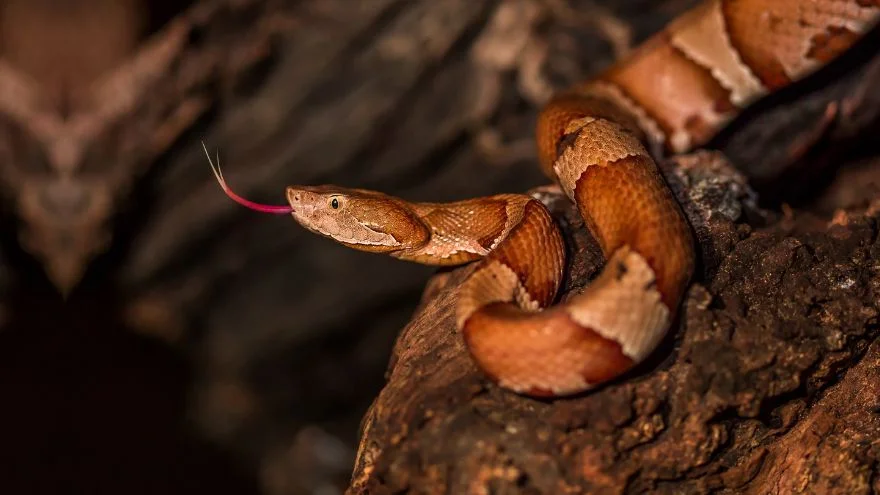Some of the most dangerous animals in Connecticut are deadly when they come in contact with humans. These animals include venomous snakes, American black bears, mountain lions, etc.
Connecticut is located in the New England region of the United States, in the Southern parts of it.
This state is divided into urban and rural areas, and as such many animals are putting up their homes alongside humans. These animals tend to be harmless, but not all of them are.
Let’s take a look at the 10 most dangerous animals that live in Connecticut, as well as safety tips to ensure your trip doesn’t get cut short by the wildlife in this state.
What are the Most Dangerous Animals in Connecticut?
1. Eastern Copperhead
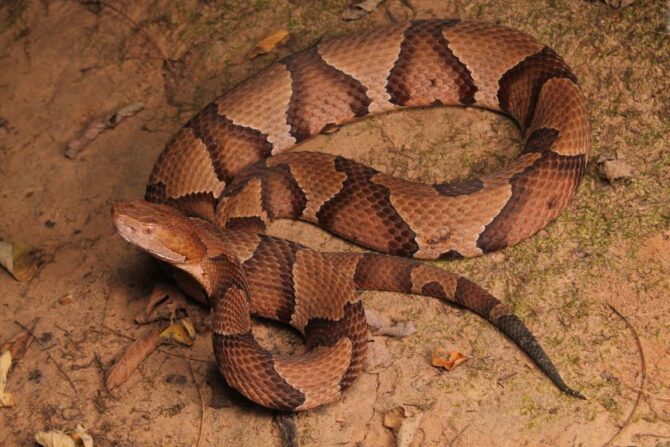
- Scientific name: Agkistrodon contortix
- Classification: Reptile
- Habitat: Forest
- Diet: Carnivore
- Conservation status: Least Concern
The Eastern copperhead snake can also be simply called the copperhead, and it is found only in North America.
This snake inhabits forests and woodlands. It is recognizable by its unique coat, which makes it colorful and lovely to observe.
However, this snake must be observed from a distance (preferably with binoculars) as it is highly venomous.
Though not aggressive, the eastern copperhead freezes on the spot when it comes across a human rather than slithering away.
This increases the chances of you stepping on the snake, and getting bit. Symptoms include pain, extreme nausea, throbbing, and swelling.
2. Timber Rattlesnake
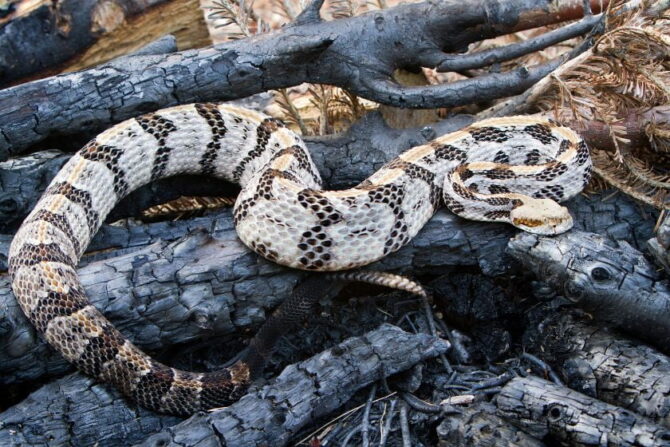
- Scientific name: Crotalus horridus
- Classification: Reptile
- Habitat: Forests
- Diet: Carnivore
- Conservation status: Least Concern
The timber rattlesnake is also known as the banded rattlesnake or the canebrake rattlesnake, and just like the copperhead, it can only be found in North America.
It is widely distributed in the continent, hence its safe conservation status. The timber rattlesnake also presents the problem of venom.
The timber rattlesnake is highly venomous, and it is considered one of North America’s most dangerous snakes.
Fortunately, this snake has a mild personality and strikes only as a last resort. When it does strike, the venom can be drastic.
Nausea, swelling, low blood pressure, and blurred vision are some symptoms.
3. Red Fox
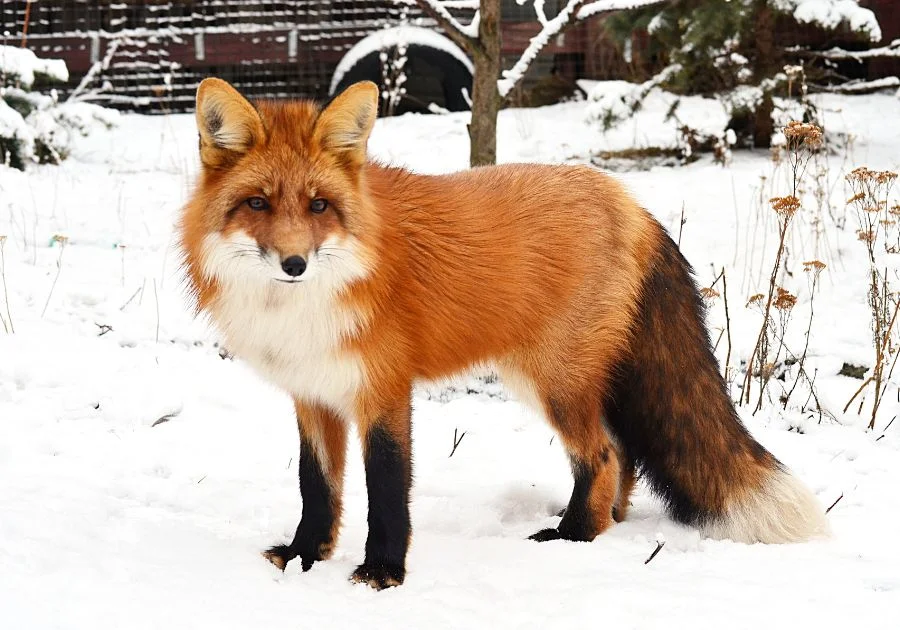
- Scientific name: Vulpes vulpes
- Classification: Mammal
- Habitat: Forests, fields, marshes
- Diet: Carnivore
- Conservation status: Least Concern
The red fox can be found in different parts of the world, from North America to Africa down to Europe and Asia.
It got introduced into Australia as well, but its presence there isn’t considered a good thing.
The red fox isn’t always seen as dangerous, and some sources may not even consider it as such.
It tends to avoid humans and would rather flee than fight. However, there are some concerns.
Red foxes can attack when in a group, and rabid foxes are also unstable. They can attack your pets too, and even your kids.
4. Gray Fox
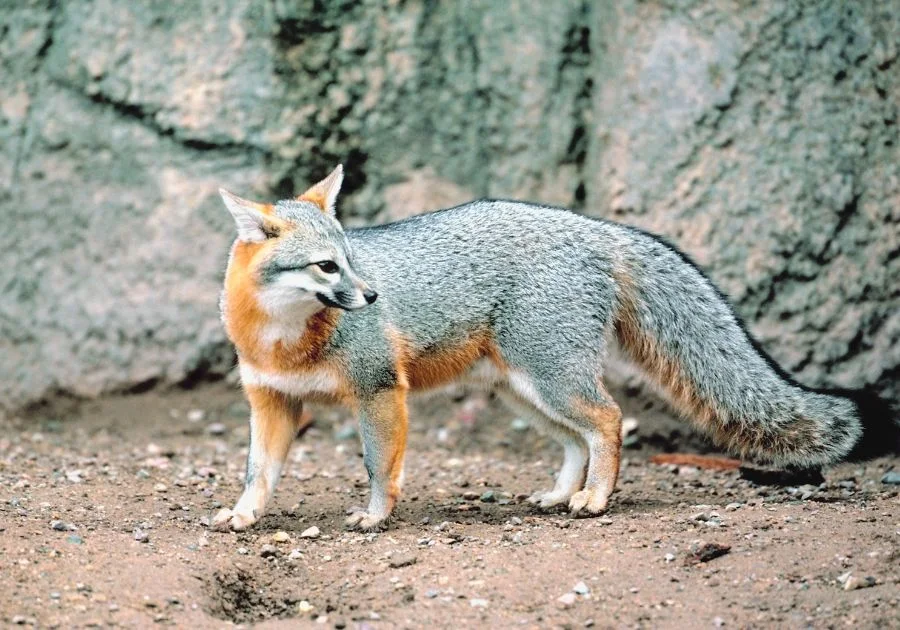
- Scientific name: Urocyon cinereoargenteus
- Classification: Mammal
- Habitat: Forests
- Diet: Carnivore
- Conservation status: Least Concern
The gray fox is not as widespread as the red fox above but remains common in the United States, as well as other parts of North America and Central America.
It is an arboreal mammal, and would often mount trees to escape predators.
The gray fox is less dangerous than the red fox and is more of prey than a predator in the wild.
There are still some concerns with this fox, though, mainly when it is rabid. A rabid gray fox can attack without provocation. To be safe, do not approach any of these wild dog species.
5. North American Beavers
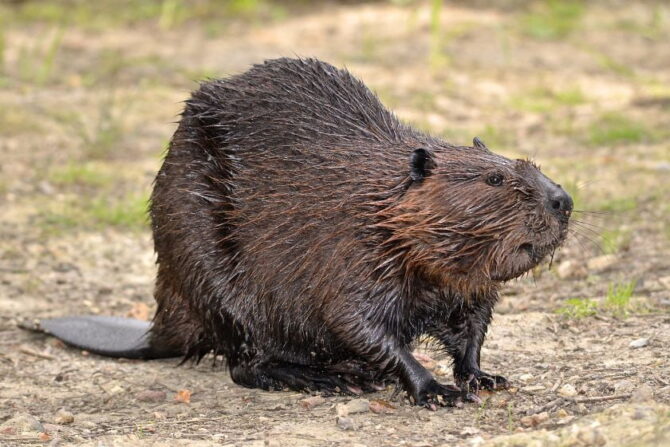
- Scientific name: Castor canadensis
- Classification: Mammals
- Habitat: Ponds, lakes, rivers
- Diet: Herbivores
- Conservation status: Not extinct
The beaver is often portrayed in animated movies as a hardworking, territorial animal, and there’s a lot of truth in that.
Beavers live close to waterbodies and construct their own houses out of sticks and twigs. They also build dams and have a good social life.
Seeing as they put work into where they live, it isn’t surprising that they are territorial. Beavers do not appreciate intruders and would fight you off.
They are also nocturnals and feel disoriented during the day, which can make them attack a human out of fear.
6. American Black Bear

- Scientific name: Ursus americanus
- Classification: Mammal
- Habitat: Forests
- Diet: Omnivore
- Conservation status: Least Concern
The American black bear is simply known as the black bear, and it is located only in the United States.
It is the smallest of all bears on the continent and is considered an omnivore. Despite the name, you may find some American black bears that are brown.
In Connecticut, the American black bear is considered the most dangerous animal, mainly because it seems to be the biggest predator in the state.
It doesn’t attack without provocation, but you shouldn’t mess with it.
7. Coyote
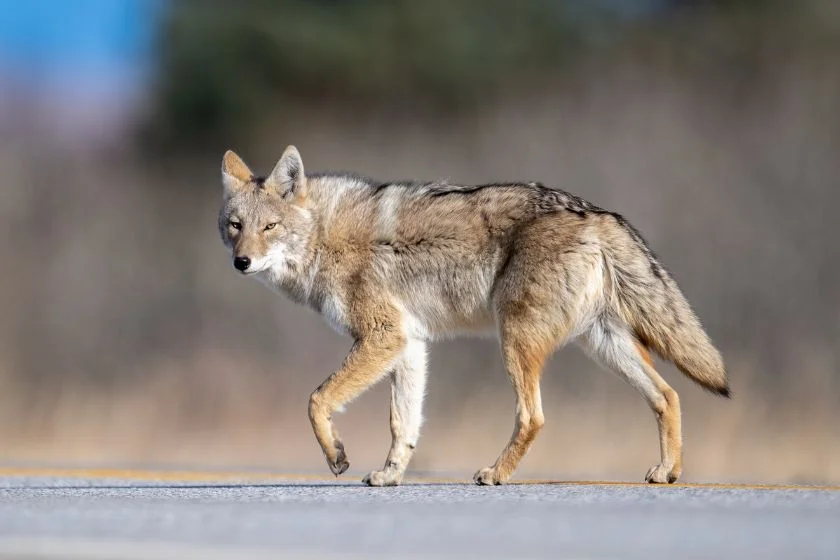
- Scientific name: Canis latrans
- Classification: Mammal
- Habitat: Grasslands, deserts
- Diet: Carnivore
- Conservation status: Least Concern
The coyote is a part of the Canidae (dog) family, making it a close relative to the wolf and the domestic dog.
The coyote can also be called the American jackal, and it is a native of North America. Coyotes are regarded like red foxes in terms of danger.
They aren’t considered highly dangerous and predatory, but they are prone to rabies, which leads to unstable behaviors.
Coyotes also attack pets and may pose some risks to children too.
8. Bobcat
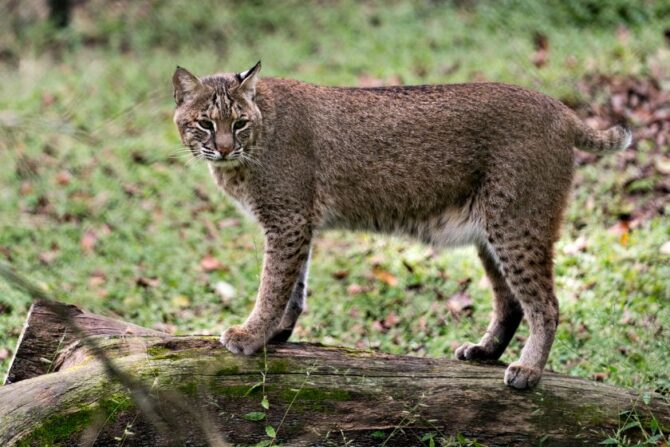
- Scientific name: Lynx rufus
- Classification: Mammal
- Habitat: Forests, swamps, deserts, scrublands
- Diet: Carnivore
- Conservation status: Least Concern
The bobcat looks like a medium-sized domestic cat, but there’s nothing domestic about the bobcat (despite its cute name).
It is a native of North America and can be found in Canada, Mexico, and the United States. The bobcat is a solitary animal, and very adaptable.
Bobcats are dangerous because they can attack humans without provocation, especially when hungry or rabid.
However, this happens rarely. Bobcats are shy animals and stay away from humans. Just keep your distance from them.
9. Moose
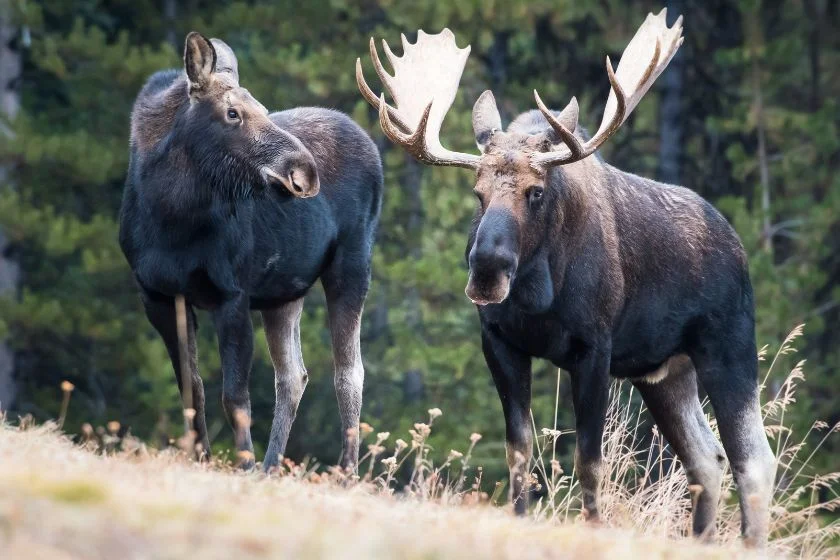
- Scientific name: Alces alces
- Classification: Mammal
- Habitat: Forest
- Diet: Herbivore
- Conservation status: Least Concern
The moose is the largest member of the deer family, and it can be found both in North America and some European countries.
Its range includes Canada, Alaska, New England (where Connecticut lies), and Poland.
Being a herbivore, many people won’t consider the moose as dangerous as a bear. While that might be true, the risk of getting injured by a moose is higher.
These animals are heavier than bears, and the male comes with antlers that are weapons. Moose aren’t predators, but they will attack if they feel threatened.
10. Cougar

- Scientific name: Puma concolor
- Classification: Mammal
- Habitat: Mountainous terrain, rocky outcrops
- Diet: Carnivore
- Conservation status: Least Concern
The cougar is a native of both North and South America, with a range that goes from Canada to the Andes in South America.
It belongs to the Felidae family and is a very large member. The cougar goes by many other names like a panther, mountain lion, puma, and catamount.
Cougars look scary, but they do not always attack humans. Many cougars don’t recognize humans as prey, and may just keep their distance.
However, starving cougars are more likely to attack people, as well as mother cougars with little ones.
Young cougars looking for territories might also attack humans.
Connecticut Wildlife Safety Tips
Connecticut isn’t teeming with wild beasts, and attacks are not frequent.
However, with human activities increasing in Connecticut, you’re more likely to meet wild animals even without venturing into their habitat.
Here are some safety tips to help you stay safe:
- According to Connecticut laws, it is illegal for anyone to take care of wildlife other than a rehabilitator appointed by the state. Never take a wild animal home! If it looks injured or away from its mother, get appropriate help.
- Be cautious when stepping into forested areas because of the snakes that could be lying around. Wear strong footwear and watch your steps.
- If you encounter a moose, back away from it slowly without making a sound. However, with a bear, you should make noise to scare it away.
Frequently Asked Questions
What is the most dangerous animal in Connecticut?
Of all the dangerous animals in Connecticut, the black bear is regarded as the most dangerous.
While there aren’t too many black bears in Connecticut, there are enough to make an impact.
These mammals weigh up to 500 pounds and are fast. It’ll be hard to outrun or overpower a black bear.
Are wolves in Connecticut?
There were once wolves living in Connecticut, but they were driven to extinction because of hunting in the 1700s.
Some people still report sightings of wolves in this state, but they might just be mistaking the coyote for a wolf.
Are bobcats in Connecticut?
There are bobcats in Connecticut, and with there being an expanse of forested areas in Connecticut, the bobcat is popular in the state.
What kind of wild dogs are in Connecticut?
There are currently just 3 wild dog species in Connecticut. The coyote, the gray fox, and the red fox. There used to be the gray wolf, but it has gone extinct.
Summary
There are many animals in Connecticut, and not all are dangerous.
However, the 10 on our list are to be avoided because of the danger they pose, and you shouldn’t get too close to any of these animals.
Make safety a priority, and respect the wildlife.
